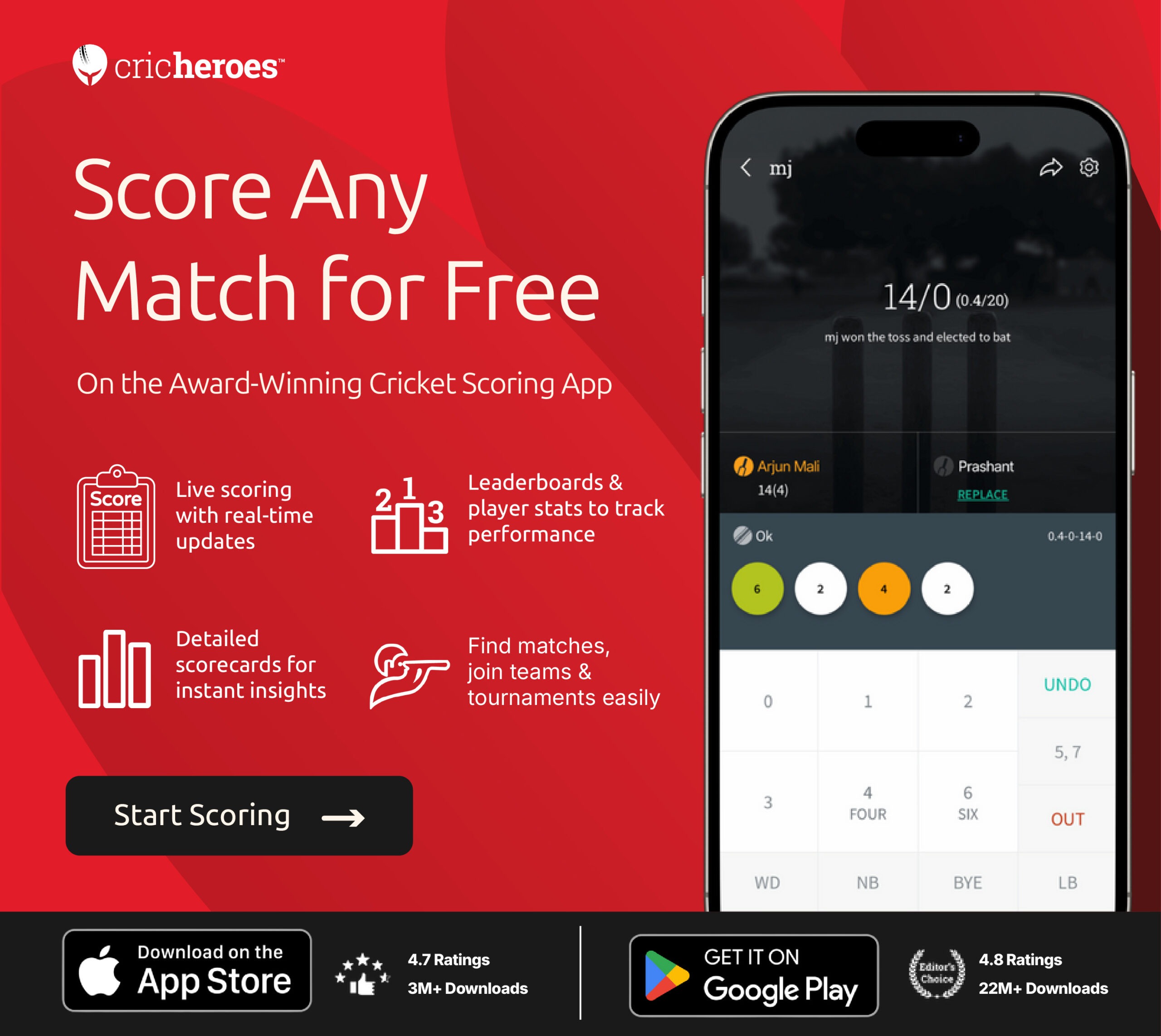Every Test fan knows how confusing waiting for the lunch break time in Test cricket can be. You tune in expecting a pause, but sometimes it’s late or early. That leaves you guessing when play will stop and what happens next. In this post, we highlight why lunch breaks follow set rules, how they impact teams, and what fans should expect. You’ll leave with clear, helpful answers—no fluff.
Why lunch break time in Test cricket matters
- Test cricket uses fixed break times to keep each day’s play fair and balanced.
- Lunch breaks affect bowler and batsman energy. Too late or too early, and it changes focus.
- For broadcasters and fans, accurate timing means better planning and coverage.
To illustrate, consider the Ashes 2019. Players noted that a delayed lunch threw them off rhythm. That shows timing isn’t just a rule—it’s part of the match flow.
Official rules on lunch break timing
- Law 12.2 in the MCC Test playing conditions governs lunch intervals.
- Typically, a 40-minute break is scheduled after 115 overs.
- Umpires track time and over count. If over 115 arrives early or late, with 5 minutes leeway, they adjust.
Example: If over 115 finishes at 12:50pm, lunch starts then—even though 1pm was expected. If it finishes at 1:10pm, it can start late, keeping play fair.
How variations in lunch break timing affect teams
Batsmen
- A longer morning session can tire them before lunch.
- A short morning may leave them fresh but eager to keep going.
Bowlers
- Long spells pre-lunch leave them drained.
- A late lunch might mean less recovery, and fatigue sets in during the afternoon session.
Captains
- They can use lunch timing to reset field tactics or plan bowling changes.
- A delayed lunch may push them to adjust session goals.
Cricket Q&A
Five quick questions. Get a personal tip.
Lunch breaks in day-night Test matches
Lunch breaks in day-night Tests are called the Dinner break and follow a different clock. The key change is timing:
- Day-night Tests often begin at 1:00–2:00 PM local time.
- The main meal break (called “Dinner”) usually starts around 5:00–5:40 PM.
- A 20-minute “Tea” break follows later in the evening.
This shift changes player prep. Under lights, the ball swings more, and having a break before or after sunset can impact match flow. Teams often plan innings around the dinner break to avoid batting during twilight, when visibility dips.
After the dinner break, the tea break comes into play in day-night Tests. If you’re curious how that works, here’s a full breakdown on tea break time in Test cricket.
Does rain affect lunch timing?
Yes, rain or bad light can shift lunch. If play is delayed, umpires can move the break:
- If the start is delayed, lunch might come earlier or be taken at the scheduled time with fewer overs.
- If play is already on and weather interrupts near lunch, they might take the break early.
- Umpires try to ensure fair balance, not letting one team get too much or too little rest.
Example: During India vs New Zealand WTC Final 2021, frequent rain led to adjusted break times. This allowed better use of limited daylight and kept both teams in sync.
Also read about: Test Cricket Rules
What do players do during lunch breaks?
During lunch, players:
- Change into fresh kits.
- Refuel with meals based on their role (light for bowlers, heavier for batsmen).
- Get physio or massage therapy.
- Watch replays or discuss tactics with coaches.
It’s not just a rest. It’s also a mental reset. Some players review videos, while others stay quiet to keep their focus. A bowler struggling with his rhythm might work with the bowling coach on minor tweaks during the break.
Do teams plan strategies during the lunch break?
Absolutely. The lunch break offers a pause to rethink. Coaches and captains huddle with players:
- They discuss who bowls first after lunch.
- Review opposition weaknesses from the first session.
- Set short-term goals for the next session—like “2 wickets in first 10 overs.”
This break is also when batting pairs plan who will face the first ball, which shots to avoid, or how to rotate strike. For teams under pressure, it’s a chance to calm down and regroup.
Fans and lunch breaks: What do viewers usually do?
For many fans, the lunch break is their own mini reset. But here’s what actually happens during that 40-minute gap:
- TV broadcasters air match highlights or expert analysis.
- Commentators give pitch reports, session summaries, or replays of key dismissals.
- At the stadium, fans grab food, visit washrooms, or stretch after sitting.
This time also helps build suspense. If a team is 5 wickets down, fans use the break to discuss what might happen next. Online chats, Twitter threads, and YouTube Lives often heat up at this time.
Also read: Follow-On Rule in Test Cricket
Are there fixed lunch times across all venues?
No, the lunch break time changes based on the local start time of the Test match. Here’s how it usually works:
- Traditional Tests start around 11:00 AM local time.
- Lunch is taken after two hours, typically at 1:00 PM.
- The timing follows the playing hours set by local boards, not a universal clock.
Here’s a simple rule: lunch comes after the first session unless weather or over rates change it. This is why in India, Australia, and England, you’ll see different actual clock times for the lunch interval.
Why fans ask: “Has lunch been taken?”
This is a common search during live matches. Fans Google or post “Has lunch been taken?” when:
- Weather delays have confused break timing.
- Streaming services don’t show the lunch update.
- They’re tracking match summaries and need to know when the second session starts.
Even on Reddit and Quora, you’ll find posts from confused fans trying to figure out if play has stopped or resumed. This shows how break times matter not just for players, but for fans too.
Case study: 2014 Lord’s Test – The delayed lunch twist
During the 2014 Lord’s Test (England vs India), England were batting steadily when over 115 ended a bit early. The umpires took lunch ahead of the scheduled 1:00 PM.
India used that early break to regroup. When play resumed, Ishant Sharma bowled a fiery spell and changed the game. That small timing shift helped India rethink plans and return stronger. It’s one of those moments where a lunch break changed momentum.
Long lunch breaks: Do they break rhythm?
Yes, especially for bowlers and new batsmen. A longer-than-usual break can cool momentum:
- Fast bowlers may lose rhythm if they were on a roll.
- New batsmen might lose focus during a long wait to bat.
- Set players sometimes return cold, leading to early dismissals.
Coaches try to manage this by keeping players lightly active during breaks—stretching, light jogging, or short throwdowns. This helps keep body and mind ready for action.
Lunch break myths in Test cricket
Let’s clear up a few common myths:
- “Lunch is always at 1:00 PM.”
False. It depends on match start time and over completion. - “Lunch gets skipped if play starts late.”
False. It’s usually adjusted, not skipped. - “The batting side gets to choose when lunch is taken.”
False. Umpires control break times based on the rules.
These myths often come from casual viewers or confusing TV coverage. Knowing the real rules helps fans understand match flow better.
Conclusion: The quiet pause that shapes the session
Lunch in Test cricket is more than a break. It’s part of the game’s strategy, rhythm, and planning. Knowing when and how it works helps fans understand player decisions and session shifts. So next time you’re watching a tight Test match and lunch nears, remember: it’s not just about food—it’s a turning point.
FAQ
What time is lunch in Test cricket?
Usually two hours after play starts, but it depends on local start time and over completion.
How long is the lunch break in Test matches?
It lasts 40 minutes.
Why is there a lunch break in cricket?
To give players a proper meal and reset time during the long day.
Do rain delays affect lunch timing?
Yes, umpires can move lunch earlier or later to fit play conditions.
What happens if lunch overlaps with bad light?
Lunch may be taken early or rescheduled.
Do day-night Tests have lunch?
No. They have a dinner break instead, followed by a tea break later.
Can lunch be taken in the middle of an over?
Usually no. Umpires try to wait until the end of the over.
Do players eat a full meal during lunch?
Yes, but tailored to their role. Batters often eat lighter meals.
Is there any warm-up during lunch?
Yes, players stretch, jog, or do light catching to stay ready.
Who decides when lunch is taken?
The on-field umpires, based on MCC laws and match flow.

I am Manan Joshi , SEO All-Rounder at CricHeroes.
CricHeroes is the ultimate Cricket Scoring App and the world’s only true Cricket Network. With more than 4 crore+ registered cricketers using CricHeroes to Live Cricket Scores for their local cricket matches and tournaments, CricHeroes is already the #1 Cricket Scoring App Globally!
We also proudly present “CricHeroes Store” by CricHeroes, a dedicated shop for cricket apparel and accessories, helping players gear up for their game.















